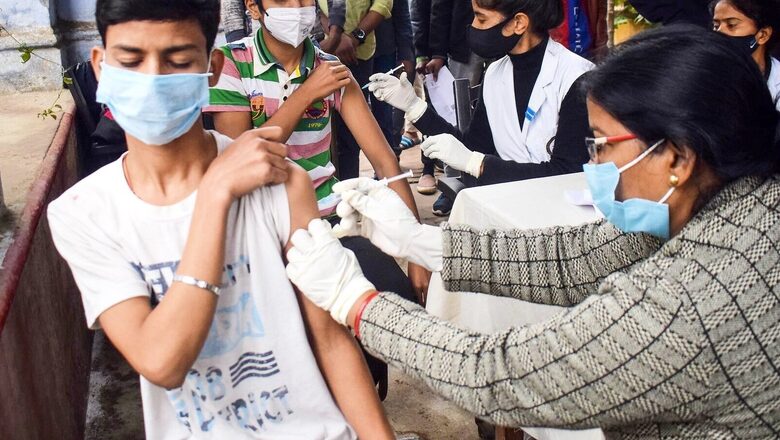
views
The number of active cases of covid infection has started falling across the country and we can now safely say that we are past the peak. The third wave was fuelled by the Omicron variant. There is a debate going on whether we will see another surge or not. WHO has recently said that this is not the end of the pandemic and the next variant may be a fitter one. What can be or should be done if we see a fourth wave of the pandemic? One thing that this pandemic has taught us is that stopping a highly transmissible virus from entering a geographical area is almost next to impossible. Therefore, the better option is to prepare oneself for handling and containing the spread and mitigating its impact on the general populace.
First, we should be sending an appropriate and adequate number of samples to the INSACOG laboratories to look for mutations. Mutations will keep happening and the scientists will have to tell us whether a particular variant is a variant of interest or variant of concern or none of these two.
Simultaneously, we will have to look for the early warning signals of a surge. During the three waves, it has been seen that when a highly transmissible virus appears, almost all members of the same households start getting infected. At the onset of the second wave, we were able to catch the early warning signal from Ghaziabad when family members of children of a particular school started turning positive. It was quickly disseminated to all district officials to get ready to handle the increased number of daily cases. For this to happen, it will be mandatory to ensure that a sufficient number of samples are tested on a regular basis. Testing of ILI/SARI cases from the OPD/IPD of hospitals will be very helpful.
Second, the arrangements for the treatment of Covid patients at hospitals should be fully ready. After the experience of the second wave, the country is now much better prepared in terms of infrastructure and logistics. Oxygen plants, oxygen concentrators, ventilators and other equipment like HFNO/Bipap/CPAP have been commissioned; life-saving medicines and other consumables have been stocked adequately. The government of India has amply supported the states to prepare well for handling the next surge. States have used their own resources also to remain better prepared for any future surge and that will prove to be very helpful.
To overcome the sense of complacency in healthcare workers, organising a mock drill on monthly basis will be extremely useful. In this exercise, development partners should also be roped in to carry out an independent assessment of the mock drill to identify the gaps. Designated Covid hospitals can be asked to admit dummy patients and check their equipment including oxygen plants, ventilators, high-frequency nasal cannula, etc. Response of manpower and their training needs should also be assessed. Mock drills and regular training on infection prevention, treatment protocols, etc. will help to keep the healthcare force battle-ready.
Third, for any infectious disease management, trace, track, isolate and treat would be the strategy of choice but more so in cases when there is person-to-person transmission like in H1N1, Covid, etc. However, going by the experience of covid waves, mindless contact tracing on a very large scale has very limited utility. When the number of daily cases becomes very high, trying to trace a large number of contacts is not a very smart idea. Suppose, there are 40,000 new cases in a day and if we are trying to trace 30-40 unique contacts for each case then the number of samples and consequent burden of testing will become so high that it will sharply increase the turnaround time of testing. It will be difficult to get test results quickly which will lead to delay in isolating the infected persons, resulting in passing on of infection to many others. A better strategy would be to quickly trace the symptomatic contacts and test them so that persons who may deteriorate can be identified faster and treated as soon as possible. To generate a sense of confidence, it is needless to mention that the household contacts should also be tested.
Also Read: Missing Females: COVID-19 Underreporting among Women Exposes a Persistent and Global Problem
Fourth, it is now clear that most of the infected persons are asymptomatic or with mild symptoms, who do not require hospitalisation and can recover very well at home. A robust system to monitor the covid patients recuperating at home must be put in place including making medicine kits available at home, free of cost, through the health department officials. Through the call centre at Integrated Covid Control and Command Centre, we have ensured that every home isolated patient is called at least once every day to keep a tab on his/her health. Should the need arise for hospitalisation, this helps in quick intervention. This instills confidence in the home isolated persons and avoids a run on hospital beds.
Fifth, covid vaccination must be completed as fast as possible. People requiring precaution/booster dose should also be covered quickly. Vaccination has been the crucial intervention that changed the entire scenario during the third wave. Though Omicron did not spare vaccinated persons from getting infected, they were spared complications and severity.
Also Read: In COVID Times, Why It is Dangerous to Mistake Information for Education
Finally, the message that Covid appropriate behavior is a must till the scientific bodies come to a consensus about the end of the pandemic has to be repeated continuously and vigorously. All channels of communication for IEC and BCC must be utilised. After all, Covid appropriate behavior not only helps in controlling the spread of covid infection but also helps in the control of many other diseases like TB, H1N1 and diarrhoea.
Amit Mohan Prasad is an IAS officer currently serving as Additional Chief Secretary, Dept of Health and Family Welfare, Govt of UP. Views expressed in this article are those of the author and do not represent the stand of this publication.



















Comments
0 comment